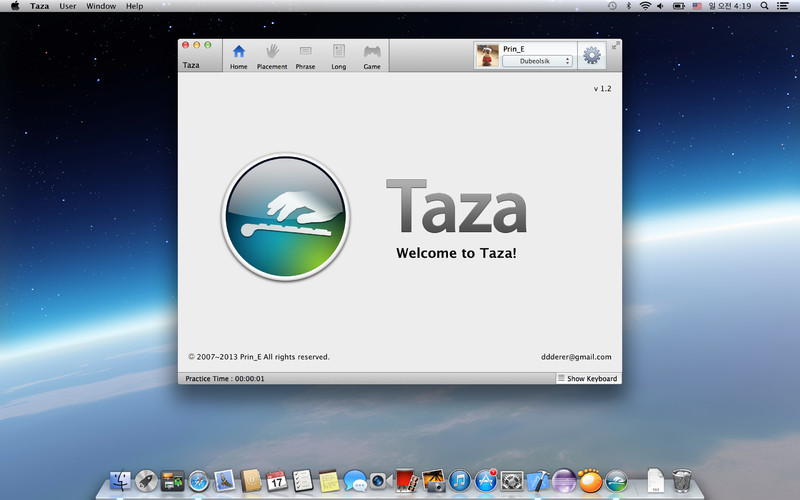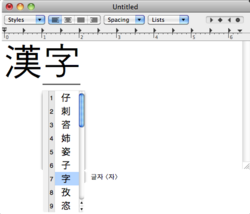It is very easy to add Hanja as you type. When you are typing in Korean and complete a Sino-Korean compound word, before adding a space (while the word you are typing is still underlined), press Option-Return. This will give you a number of Hanja from which you can choose the appropriate combination. How your phone number or email address is used. Microsoft will use your phone number or email address only for this one-time transaction. Standard SMS rates may apply. Microsoft Editor goes beyond checking spelling and grammar so you can write with confidence. Get intelligent suggestions in the.


When you set up the Korean input source provided in macOS, you can enter Korean characters regardless of the keyboard or language you use with your Mac. If your computer’s default language is set to Korean, the default input method is Korean.
Word For Mac Free Download
Set up a Korean input source
On your Mac, choose Apple menu > System Preferences, click Keyboard, then click Input Sources.
Click the Add button , select Korean (on the left), then select any of the following:
2-Set Korean: Vowels are on the right side of the keyboard, and consonants on the left. This is the default input source for Hangul in macOS.
3-Set Korean: Supports 3-set Hangul input used with the Gong Byung-Woo keyboard layout.
390 Sebulshik: Follows the general rules of 3-set Korean and supports the same input source for special characters as the English keyboard.
GongjinCheong Romaja: Follows the standard romanizing orthography of GongjinCheong.
HNC Romaja: Follows the romanizing orthography of Haansoft Inc. You can use the English letter that corresponds to the pronunciation of each Hangul letter. For example, the M key corresponds to “ㅁ” in Hangul.
Click Add.
After you set up a Korean input source, you can switch to it and start typing Korean characters.
Note: If your Mac has a Touch Bar, you can customize the Control Strip by adding the Input Sources button . See Customize the Touch Bar.
Change Korean input source preferences
On your Mac, click the Input menu in the menu bar.
Choose to open preferences for the current input source (for example, choose Open 2-Set Korean Preferences).
In preferences, choose any of the following:
Font size: Specify the font size to use in the Candidate window. (The Candidate window shows suggested Hanja characters and their meanings and pronunciations.)
Input format: Choose whether to show converted characters as Hanja, Hanja (Hangul), or Hangul (Hanja).
Delete by: To delete text letter by letter while composing a syllable, choose Jaso. To delete text by syllable, choose Gulja.
To change the highlight color in the Candidate window, choose Apple menu > System Preferences, click General, then click the “Highlight color” pop-up menu and select a color.
Switch to and type Hangul
In an app on your Mac, do any of the following to choose one of the Korean input sources.
Use the Input menu: Click the Input menu in the menu bar, then choose a Korean input source. If an input source is dimmed, the current app doesn’t support it.
You can also press Option-Control-Space bar to select the next input source in the Input menu, or Control-Space bar to select the previous input source.
Use the Caps Lock key: If you set an option in Input Sources preferences to use the Caps Lock key to change input sources, press the key to switch between a non-Latin input source (such as Korean) and a Latin input source (such as English).
To check your settings in Input Sources preferences, choose Apple menu > System Preferences, click Keyboard, then click Input Sources.
Use the Fn key or : If you set an option in Keyboard preferences to change input sources by using the Fn key or (if available on the keyboard), press the key to display a list of your input sources, then continue pressing the key until the input source you want is selected. The list disappears automatically.
To check your settings in Keyboard preferences, choose Apple menu > System Preferences, click Keyboard, then click Keyboard.
Use the Touch Bar: If your Mac has a Touch Bar and you customized the Control Strip by adding the Input Sources button , tap the button, then tap a Korean input source. To learn how to change the Control Strip, see Customize the Touch Bar.
Start typing.
Note: If you type Hangul in a search field, the results show possible matches for you to choose from, even if you enter just one character.
You can use the Keyboard Viewer to see which keys correspond to the Korean input source you’re using. To see the Keyboard Viewer, click the Input menu, then choose Show Keyboard Viewer.
If your Mac has a Touch Bar, it can show words or phrases you might want to use next (called typing suggestions), to help you save time.
Convert Hangul to Hanja
When you enter Hangul text, you can convert the input into Hanja.
In an app on your Mac, type the Hangul characters.
The longest Hanja word before the cursor corresponding to the Hangul syllables will be converted.
To display the Candidate window, do one of the following:
Press Option-Return. The Candidate window shows suggested Hanja characters and their meanings and pronunciations.
Select the text of a set of syllables, then press Option-Return to show the Candidate window for only that text.
In the Candidate window, do one of the following to select a Hanja character:
Double-click the character.
Press the Space bar or the Return key. If you need to move between Hanja characters in a word, use the arrow keys.
Press the key for the number that appears next to the character.
Note: If the Candidate window appears and you press Escape, the window closes, and the original state of the document appears.
Edit the Hanja user dictionary
With the Hanja dictionary, you can enter frequently used Hanja more efficiently.
On your Mac, click the Input menu (looks like a symbol or character) in the menu bar, then choose Edit Hanja Dictionary.
Click Add, then type the word in the Hangul and Hanja fields.
Press Option-Return to open the Candidate window, which shows suggested Hanja characters and their meanings and pronunciations.
In the window, select the word, then click Save.
To remove a word you added, search for it, then select it and click Remove.

Hanja On Word For Mac Pro
The Korean people and their language have existed for thousands of years. Early on, they used Chinese characters to write the Korean language. The pronunciations and grammar were different than Chinese. They were using those written characters to represent their own language. When Chinese-like characters are used by Koreans in this way, they refer to the characters as “HanJa.”
Today HanJa is not required when writing Korean, but it is still used in formal and traditional writing. All words can be represented by pure Korean HanGul letters, but only words with Chinese roots can be represented by HanJa characters. About 80% of Korean words can be represented by HanJa. Typically, Chinese root words are two syllables represented by two HanJa characters.
There are thousands of HanJa characters. Many share the same Korean pronunciation, but each has its own meaning. Each HanJa character represents a single syllable. However, the HanJa characters are not phonetic — they do not contain any clues about pronunciation. They contain rich clues about meaning. In fact, a primary use of HanJa is to specify meanings, especially in cases when multiple HanJa characters share the same pronunciation.
For Korean words with HanJa roots, the HanJa representation provides the exact meaning. The HanGul version provides the exact pronunciation. The HanGul version is significantly easier to use, but both are required to fully understand the word. For example, if searching for meanings online it is much easier to search based on the phonetic HanGul version, select the correct HanJa character based on the search results, and then learn the meaning.
Korean high school students memorize thousands of HanJa characters. Truly mastering HanJa, however, requires even higher levels of study. Learning the most common HanJa root characters can enhance Korean vocabulary study significantly; this is similar to how studying Greek or Latin root words helps build English vocabulary. An excellent resource is the book “Handbook of Korean Vocabulary” (Handbook of Korean Vocabulary: A Resource for Word Recognition and Comprehension, by Miho Choo and William O’Grady, 1996, Center for Korean Studies), which has hundreds of vocabulary words organized by common root characters. It also has a useful section of Korean root words, which do not have HanJa representations. http://hanja.naver.com is a good online source for HanJa study.
A good example of a HanJa character is the root syllable “Han.” The HanGul version of this syllable is 한, which specifies the pronunciation “Han” (ㅎ=h, ㅏ=a, ㄴ=n; ㅎ+ㅏ+ㄴ=한). The HanJa version is 韓, which means Korea. You can combine the root 韓 with other syllables to create many two-syllable words, as shown in the following table:
Table 1.1: Examples of HanJa Vocabulary with Common Roots
Hanja On Word For Macs
HanJa | HanGul | Pronunciation | Definition |
韓國 | 한국 | HanGuk | Korean Country |
韓食 | 한식 | HanShik | Korean Food |
南韓 | 남한 | NamHan | South Korea |
北韓 | 북한 | BukHan | North Korea |
韓字 | 한자 | HanJa | Korean Characters |
As you study HanJa you will notice that some characters are simple and some are complex. The complex HanJa are usually a combination of several simple HanJa into one character. For example, the simple HanJa for roof and tree are put together into a more complex HanJa character representing the Song family name. Understanding the characters that make up a complex HanJa symbol provides a deeper understanding of the meaning. In the following example, one interprets the imagery of a family tree under one roof, which evokes deeper insights about the meaning of the family name “Song.”
Table 1.2: Examples of Simple and Compound HanJa
Hanja On Word For Mac Download
HanJa | HanGul | Pronunciation | Definition |
宀 | 면 | Myeon | Roof, Home |
木 | 목 | Mok | Tree |
宋 | 송 | Song | Song (family name) |